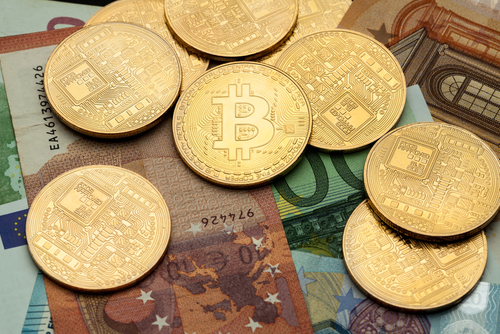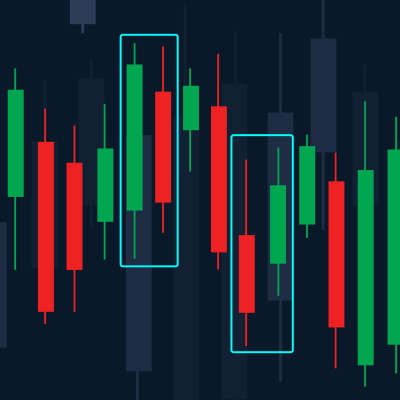Trickling Down - Forking Out
Queensway looks at some of the offshoots of the Bitcoin revolution – other coins, the increasing rate of crowdfunding and ICOs as an investment tool.

Alternatives to Bitcoin
Since Bitcoin was invented, many competitors have joined the race – some even instituted by governments. The latest upheaval was Facebook’s proposed Libra, which raised politicians and central bankers alike on their rear feet in a clamour of fear and accusations.
To understand this virulent reaction, let’s look at some of the offshoots of the Bitcoin revolution – other coins, the increasing rate of crowdfunding and ICOs as an investment tool.
Bitcoin reserve
Cryptocurrencies have not merely deleted the middleman from the process of recording and transferring wealth; they have changed the way we look at money. A crypto wallet should not be confused with a credit/debit card or e-wallet: cryptos are not money assisted by code but value-injected code. The cryptocoins exist solely in the cloud and are immediately accessible. The crypto ledger – the blockchain – is located, monitored by and managed in an ever-increasing decentralized network of computers.
The miners who maintain the network get paid in cryptos for their work – thus are new coins minted by the miners. In return, they join a group effort of recording and validating transactions. Unfortunately, since the number of issuable coins is limited, their value increases alongside the work required to record and validate each now block in the chain. The attempt to create a parallel to gold here is not amiss. The biggest difference between these two non-monetary retainers of value is that gold is regulated. Its price can be manipulated – especially by the US Federal Reserve, one of whose most important tasks is maintaining the value of the world’s reserve currency – the US Dollar. Because gold is priced in USD, their relationship is always inverse.
Why Gold?
Since about 700 BC, coins were being made of gold. Once those coins were accepted, there was always a chance that coins would be made of less gold than they represented (smaller, with other metals mixed in… Eventually, fiat currencies came into being that represented gold. Before World War 1, a gold standard existed, based on which a nation’s currency was valued according to how much gold that nation’s treasury owned – money being paper representation of that wealth. This required that only one national institution be permitted to produce money. Still, trade imbalances between nations were being settled in gold, until the two great wars, which caused an upheaval in global trade and currency valuations.
Thus, in 1944, delegates representing 44 countries met in the Bretton Woods resort in New Haven, US to agree that their currencies would be pegged to that of the US – at that point, the only country not completely ravished by the wars and since the gold rush – the owner of the majority of the world’s gold reserves. The US dollar would be the only currency pegged to Gold – thus creating that inverse relationship mentioned above. Following the war, however, as the world’s economies recovered, the US demand for imports resulted in a gradual shifting of wealth abroad. In 1971, US President Richard Nixon had no choice but to sever the relationship between the US Dollar and Gold. The former, however, remained the world’s major reserve currency, since most of the world’s trade was still being conducted in dollars thanks to the US’s being at the centre of most of that trade.
Over the past decade, however, another global economic power has been emerging – China, which seeks to challenge the US dollar by spreading its influence through projects such as the Belt and Road infrastructures initiative throughout Asia, Africa and even Europe, by devaluing its own currency to increase exports and more. The current result is a developing trade war, with the US sanctioning the Chinese economy, forcing it even further into a corner where it has no choice but the challenge the USD even further.
Electronically Limited
Bitcoin has been limited to 21 million coins. At present 11 million Bitcoins have been minted, resulting in 2018’s surge in value. Obviously, this begs the comparison to gold, which is produced in very limited quantities in very limited countries – among other reasons, to maintain its value. Of course, the motivation for a government like China’s to adopt a currency it has no currency is limited; however, other coins exist, other systems and some of them under government auspices.
In 2017, Dubai rolled out its own cryptocurrency – Em-cash, followed by Venezuela’s Petro. Estonia is on the verge of launching its own cryptocurrency, which alongside its e-citizenship (administered by a company aptly named Bitnation) could create a borderless extension of itself. And, of course, China’s central bank recently announced its own electronic Renminbi – a potential borderless challenger to a troubled paper dollar.
Trickle-down
Three months after publishing Satoshi’s earth-shattering paper on cryptography and the creation of a peer-to-peer digital currency system, the first Bitcoins were issued, valued at 1,309 to the US dollar. Within less than a decade, their value peaked at over $17,000, plunging to 3k the following year, and continuing to show severe volatility thereafter. That, their expense and the eventual slowing down of transaction speed soon presented a challenge, casting its viability as a useable currency in doubt. Clearly, a solution was required.
Fork it!
The blockchain – that online ledger made up of continuously introduced packets of recorded transactions – relies on the agreement amongst its users regarding its history and technology. If two parties are in disagreement over either one, the chain splits. These are called forks. Some are short lived – where an agreement over the history results in a temporary fork, one side of which usually succumbs to the authority of the second and realigns itself. The more long-lived ones are usually due to a bug being discovered or new features being added to the technology. Sometimes, both branches continue to coexist (a split); sometimes one branch realigns itself according to the new rules – a hard fork.
For example, soon after its inception, many contenders arose to challenge Bitcoin, whose technology was found lacking on many fronts. To stay in the game, in 2017, a hard fork occurred in the Bitcoin blockchain that resulted in the creation of a new crypto-coin – Bitcoin Cash, a quicker and cheaper version of Bitcoin, in which the size of each block was increased to 32mb, providing room for more transactions per block and increasing the incentive for miners to continue cooperating with the system. Two months later, Bitcoin Gold was created in the same manner but with a different goal. As the number of Bitcoins drops, mining becomes a more resource-consuming process. If once, your average computer nerd with a strong graphics card could be a miner, gradually the process fell more and more into the hands of larger corporations – the precise opposite of the grass-roots intention of the maker. Bitcoin Gold is based on a less intensive process, thus returning the authority to the user.
Litecoin is a fork in the Bitcoin chain, which includes a fork of its own – Litecoin Cash. Stellar originated as a fork from Ripple, but is now considered a separate entity since its codebase is completely different. And so on.
Challengers
Different challengers have arisen to Bitcoin almost as soon as the crypto revolution was launched. Indeed, with each ICO (Initial Coin Offering – see next lesson), a new crypto is born. Thus, 2 years after Bitcoin, Litecoin was launched, with Ripple following 2 years later. Dash came the following year alongside Neo, with Ethereum being born in 2015. In between, many other names have cropped up, succeeded to some extent, dying away in others – with each step aiming to make cryptos more efficient and more attractive as an alternative to fiat currencies.
Let’s look at the majors:
Coining the Speed of Light
Being one of the first, Litecoin resembles Bitcoin more than any other. By 2011, Bitcoin users had to wait 10 minutes to see a transaction confirmed. Created by a former Google software engineer, Litecoin offered 4 times the speed. Unfortunately, its algorithms require more memory and – hence – more resources. Still, the infrastructure offers a higher transaction volume potential, with users being paid quicker, and is considered more stable and secure.
A Ripple in Time
Unlike Ripple and Ethereum, Ripple is not a cryptocoin but rather the name of a payments network that uses XRP as its “tokens” – of which 100 million were immediately released along with the network’s launch – the first official ICO. XRP is in fact a bridge currency that can be easily exchanged for fiat currencies or other cryptocurrencies, with the aim of situating Ripple as an exchange facilitator that bypasses banks, credit companies and other types of payment processors. Thus, for example, Ripple will execute a transaction in seconds rather than days, as is the case with banks and credit companies. Ripple’s technology actually predates Bitcoin, but XRP was only introduced in 2014.
Breathing Ether
Ethereum was also conceived of as an infrastructure rather than an actual coin, though contrary to Ripple, here the idea was more encompassing. Ethereum has been described as the Linux of Cryptocurrencies, since it provides an infrastructure upon which tokens (cryptocoins), payment applications and smart contracts (contracts that are actually independent programs with if-then statements; i.e. if a term is fulfilled, an action is enabled, for example) can be developed. Ethereum’s blockchain is easily adapted to the requirements of the application being developed – subject to community approval. As a result, several Fortune 500 companies, such as JP Morgan Chase, Intel, Microsoft and more have begum creating their own applications using the Ethereum infrastructure. Ethereum’s coin, incidentally, is called Ether.
Not all cryptos
As we have seen, cryptocurrencies can be minted by miners (received in exchange for work done) or issued through ICOs. In addition, as the challenges develop, the environment becomes – in turn – more challenging, and new solutions beget new coins and new systems. We have looked at some of these, and in this course’s last chapter we will examine the mining process, since its beauty and simplicity are really quite astounding. Meanwhile, a word about ICOs is in place.
As the crypto environment develops, the demands upon which new systems are based becomes more complex and the cost of development – more expensive. Although Bitcoins, for example, are mined, one could see the downloading of the first 50 tokens as an ICO – a very low valued ICO. Now, cryptos are big business – Bitcoin mining requires the resources of a big company.
Crowdfunding ICOs
In their heyday, cryptos developed alongside another grass-roots process – crowdfunding, the process whereby an innovator may request funding through the internet with funders becoming partners. based on this system, a funder’s money is not debited by the fund-raiser unless a certain threshold is passed that ensures the development process coming to fruition (a bit like a smart contract – you won’t take my money unless you have been pledged the minimum you require so as not to waste or lose my money before you’ve started).
An Initial Coin Offering uses the same process (although private ICOs are becoming quite common) but offers investors new cryptocoins it creates as part of its funding process (coins as shares). Unsurprisingly, Ethereum has become the leading platform for ICOs using its smart contract infrastructure. Still, since these funding processes are entirely unregulated, the scope for fraud is huge, and due diligence is a must for potential investors. Most social networks at present ban the advertising of IPOs, and the UK’s FCA and the US’s SEC have both issued a warning against them. Since, Gibraltar’s UK FSC, France’s AMF, Hong Kong’s SFC and Jersey’s Arc Fiduciary Ltd have been developing a regulatory framework for authorized ICO sponsors.






